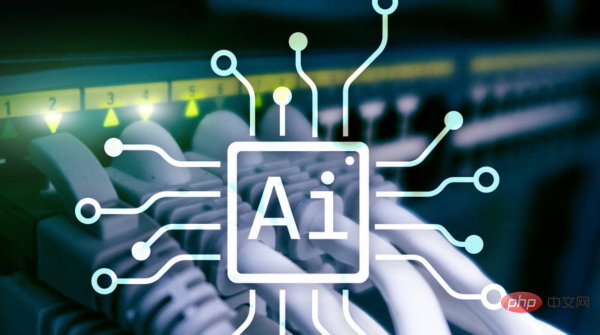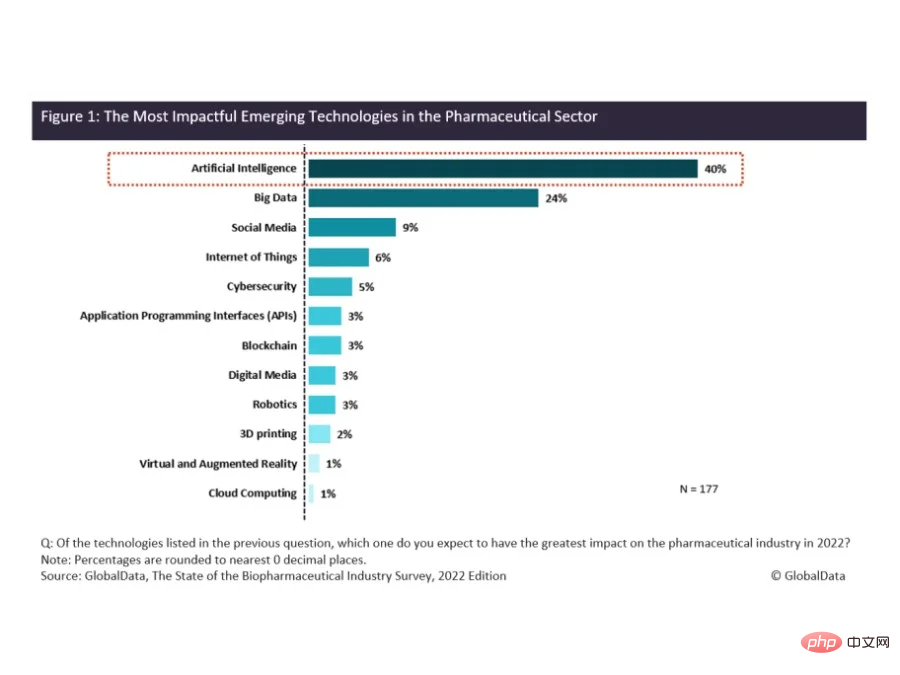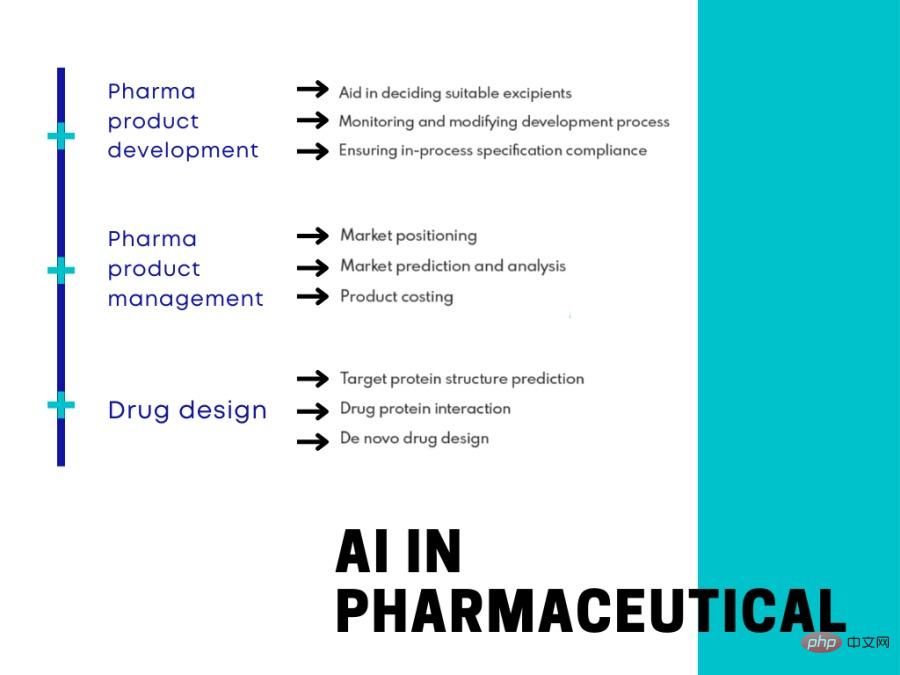Why is artificial intelligence critical to biotechnology?

Biotechnology lies somewhere in the middle between biology and technology. Through modern technology, it uses biological processes, organisms, cells, molecules and systems to create new products that benefit people and the planet. In addition, it encompasses laboratory research and development, exploring and extracting biomass through bioinformatics, and developing high-value products through biochemical engineering. Biotechnology is widely used in various fields such as agriculture, medical care, animals, and industry.
White biotechnology is concerned with using biomass to make products that require chemical processes, and can also address the energy crisis by producing biofuels, which can be used for vehicles or heating.
Every organization working in the biotechnology field maintains large data sets stored in databases. This data must also be filtered and analyzed to be valid and applicable. Operations such as drug manufacturing, chemical analysis, enzyme research, and other biological processes should be supported by computerized physical tools to achieve high performance and accuracy and help reduce manual errors.
Artificial intelligence is one of the most useful technologies to help manage biological processes, drug production, supply chains and process biotech data.
It interacts with data received through scientific literature and clinical data trials. AI also manages incomparable clinical trial data sets and enables virtual screening and analysis of large amounts of data. As a result, it reduces clinical trial costs and brings discoveries and insights to any area of biotech operations.
More predictable data makes it easier to build workflows and operations, improves execution speed and program accuracy, and makes decision-making more efficient. 79% claim that AI technology will impact workflow and become key to productivity.
All of this results in a more cost-effective solution. Over the past three years, estimated revenue generated with the help of AI has grown by $1.2 trillion.
Advantages of using artificial intelligence in biotechnology
Artificial intelligence has applications in various fields, but the most important one is the application of artificial intelligence in the medical field. While the ability to use techniques such as data classification and conducting predictive analytics is beneficial to any scientific field.
Manage and Analyze Data
Scientific data continues to expand and must be arranged in a meaningful way. The process is complex and time-consuming: scientists must complete repetitive and laborious tasks that must be taken seriously.
The data they use is an essential part of the research process, and failure can result in high costs and energy losses. Furthermore, many studies do not produce practical solutions because they cannot be translated into human language. Artificial intelligence programs help in the automation of data maintenance and analysis. The AI-powered open source platform helps reduce the repetitive, manual and time-consuming tasks lab workers must perform, allowing them to focus on innovation-driven operations.
Thoroughly examine genetic modifications, chemical compositions, pharmacology studies, and other critical informatics tasks for shorter, more reliable results.
Effective data maintenance is indeed critical to every scientific department. However, the most significant advantage of AI is its ability to organize and systematize data into forms and produce predictable results.
Driving Innovation in Healthcare
Over the past decade, we have faced challenges in the manufacturing and deployment of pharmaceuticals, industrial chemicals, food-grade chemicals, and other biochemistry-related raw materials. innovation needs.

Artificial intelligence in biotechnology is critical to promoting innovation throughout the life cycle of a drug or compound and in the laboratory.
It helps find the right combination of chemicals by calculating permutations and combinations of different compounds without the need for manual laboratory testing. Additionally, cloud computing makes the distribution of raw materials used in biotechnology more efficient.
In 2021, research lab DeepMind used AI to develop the most comprehensive human protein map. Proteins perform a variety of tasks in the body—from building tissues to conquering disease. Their molecular structure determines their use, which can be carried out in thousands of iterations - understanding how proteins fold can help understand their function so that scientists can figure out many biological processes, such as how the human body works or create new treatments and drugs.
Such platforms provide scientists around the world with access to data about discoveries.
Artificial intelligence tools help decode data to reveal the mechanisms of specific diseases in different regions and help accurately adapt analytical models to their geographical locations. Before the use of AI, time-consuming and expensive experiments were required to determine the structure of a protein. Today, some 180,000 protein structures produced by the program are freely available to scientists through the Protein Data Bank.
Machine learning helps make line diagnostics more accurate, using real-world findings to enhance diagnostic testing. And the more tests you perform, the more precise the results you generate.
AI is a great tool to enhance electronic health records with evidence-based medication and clinical decision support systems.
Artificial intelligence is also often used in genetic manipulation, radiology, customized medicine, drug management and other fields. For example, according to current research, AI improves the accuracy and efficiency of breast cancer screening compared with standard breast radiologists. And another study claims that neural networks can detect lung cancer faster than trained radiologists. Another application of AI is the more accurate detection of disease through X-rays, MRI and CT scans through AI-driven software.

Reduce research time
Due to globalization, new diseases are spreading rapidly across countries. We witnessed it with COVID-19; therefore, biotechnology must accelerate the production of necessary drugs and vaccines to protect against such diseases.
Artificial intelligence and machine learning maintain the process of detecting appropriate compounds, assist in laboratory synthesis, help analyze the validity of data, and provide it to the market. Using artificial intelligence in biotech reduces operational performance time from 5-10 years to 2-3 years.
Improving Harvest Yields
Biotechnology is critical to genetically engineering plants to produce richer harvests. The role of AI-based technologies in studying crop characteristics, comparing quality and predicting real-world yields is increasing. Agricultural biotechnology also uses robotics, a branch of artificial intelligence, to perform manufacturing, collection and other critical tasks.
By combining data such as weather forecasts, agricultural characteristics and the availability of seeds, compost and chemicals, artificial intelligence can help plan future material recycling patterns.
Artificial Intelligence in Industrial Biotechnology
The Internet of Things and artificial intelligence are widely used to produce vehicles, fuels, fibers and chemicals. Artificial intelligence analyzes data collected by IoT and transforms it into valuable data to improve production processes and product quality by predicting results.
Computer simulations and artificial intelligence suggest expected molecular designs. Strains are being produced through robotics and machine learning to test the accuracy of developing the desired molecules.
Summary
Although this is just the beginning of the use of artificial intelligence in biotechnology, it can already provide many improvements in various fields. Furthermore, the continued development of artificial intelligence in biotechnology demonstrates that it can be used in a variety of processes, operations, and strategies to gain a competitive advantage.
Not only drives innovation, but is a valuable tool that reduces costs by conducting more accurate tests and predicting results without the need for actual experiments in the lab.
In addition to discovering humanity’s future necessities in healthcare and agriculture, predicting potential losses, and making predictions for businesses, they should direct resources toward more efficient production and supply.
The above is the detailed content of Why is artificial intelligence critical to biotechnology?. For more information, please follow other related articles on the PHP Chinese website!

Hot AI Tools

Undresser.AI Undress
AI-powered app for creating realistic nude photos

AI Clothes Remover
Online AI tool for removing clothes from photos.

Undress AI Tool
Undress images for free

Clothoff.io
AI clothes remover

Video Face Swap
Swap faces in any video effortlessly with our completely free AI face swap tool!

Hot Article

Hot Tools

Notepad++7.3.1
Easy-to-use and free code editor

SublimeText3 Chinese version
Chinese version, very easy to use

Zend Studio 13.0.1
Powerful PHP integrated development environment

Dreamweaver CS6
Visual web development tools

SublimeText3 Mac version
God-level code editing software (SublimeText3)

Hot Topics
 1676
1676
 14
14
 1429
1429
 52
52
 1333
1333
 25
25
 1278
1278
 29
29
 1257
1257
 24
24
 Bytedance Cutting launches SVIP super membership: 499 yuan for continuous annual subscription, providing a variety of AI functions
Jun 28, 2024 am 03:51 AM
Bytedance Cutting launches SVIP super membership: 499 yuan for continuous annual subscription, providing a variety of AI functions
Jun 28, 2024 am 03:51 AM
This site reported on June 27 that Jianying is a video editing software developed by FaceMeng Technology, a subsidiary of ByteDance. It relies on the Douyin platform and basically produces short video content for users of the platform. It is compatible with iOS, Android, and Windows. , MacOS and other operating systems. Jianying officially announced the upgrade of its membership system and launched a new SVIP, which includes a variety of AI black technologies, such as intelligent translation, intelligent highlighting, intelligent packaging, digital human synthesis, etc. In terms of price, the monthly fee for clipping SVIP is 79 yuan, the annual fee is 599 yuan (note on this site: equivalent to 49.9 yuan per month), the continuous monthly subscription is 59 yuan per month, and the continuous annual subscription is 499 yuan per year (equivalent to 41.6 yuan per month) . In addition, the cut official also stated that in order to improve the user experience, those who have subscribed to the original VIP
 Context-augmented AI coding assistant using Rag and Sem-Rag
Jun 10, 2024 am 11:08 AM
Context-augmented AI coding assistant using Rag and Sem-Rag
Jun 10, 2024 am 11:08 AM
Improve developer productivity, efficiency, and accuracy by incorporating retrieval-enhanced generation and semantic memory into AI coding assistants. Translated from EnhancingAICodingAssistantswithContextUsingRAGandSEM-RAG, author JanakiramMSV. While basic AI programming assistants are naturally helpful, they often fail to provide the most relevant and correct code suggestions because they rely on a general understanding of the software language and the most common patterns of writing software. The code generated by these coding assistants is suitable for solving the problems they are responsible for solving, but often does not conform to the coding standards, conventions and styles of the individual teams. This often results in suggestions that need to be modified or refined in order for the code to be accepted into the application
 Can fine-tuning really allow LLM to learn new things: introducing new knowledge may make the model produce more hallucinations
Jun 11, 2024 pm 03:57 PM
Can fine-tuning really allow LLM to learn new things: introducing new knowledge may make the model produce more hallucinations
Jun 11, 2024 pm 03:57 PM
Large Language Models (LLMs) are trained on huge text databases, where they acquire large amounts of real-world knowledge. This knowledge is embedded into their parameters and can then be used when needed. The knowledge of these models is "reified" at the end of training. At the end of pre-training, the model actually stops learning. Align or fine-tune the model to learn how to leverage this knowledge and respond more naturally to user questions. But sometimes model knowledge is not enough, and although the model can access external content through RAG, it is considered beneficial to adapt the model to new domains through fine-tuning. This fine-tuning is performed using input from human annotators or other LLM creations, where the model encounters additional real-world knowledge and integrates it
 Seven Cool GenAI & LLM Technical Interview Questions
Jun 07, 2024 am 10:06 AM
Seven Cool GenAI & LLM Technical Interview Questions
Jun 07, 2024 am 10:06 AM
To learn more about AIGC, please visit: 51CTOAI.x Community https://www.51cto.com/aigc/Translator|Jingyan Reviewer|Chonglou is different from the traditional question bank that can be seen everywhere on the Internet. These questions It requires thinking outside the box. Large Language Models (LLMs) are increasingly important in the fields of data science, generative artificial intelligence (GenAI), and artificial intelligence. These complex algorithms enhance human skills and drive efficiency and innovation in many industries, becoming the key for companies to remain competitive. LLM has a wide range of applications. It can be used in fields such as natural language processing, text generation, speech recognition and recommendation systems. By learning from large amounts of data, LLM is able to generate text
 Five schools of machine learning you don't know about
Jun 05, 2024 pm 08:51 PM
Five schools of machine learning you don't know about
Jun 05, 2024 pm 08:51 PM
Machine learning is an important branch of artificial intelligence that gives computers the ability to learn from data and improve their capabilities without being explicitly programmed. Machine learning has a wide range of applications in various fields, from image recognition and natural language processing to recommendation systems and fraud detection, and it is changing the way we live. There are many different methods and theories in the field of machine learning, among which the five most influential methods are called the "Five Schools of Machine Learning". The five major schools are the symbolic school, the connectionist school, the evolutionary school, the Bayesian school and the analogy school. 1. Symbolism, also known as symbolism, emphasizes the use of symbols for logical reasoning and expression of knowledge. This school of thought believes that learning is a process of reverse deduction, through existing
 To provide a new scientific and complex question answering benchmark and evaluation system for large models, UNSW, Argonne, University of Chicago and other institutions jointly launched the SciQAG framework
Jul 25, 2024 am 06:42 AM
To provide a new scientific and complex question answering benchmark and evaluation system for large models, UNSW, Argonne, University of Chicago and other institutions jointly launched the SciQAG framework
Jul 25, 2024 am 06:42 AM
Editor |ScienceAI Question Answering (QA) data set plays a vital role in promoting natural language processing (NLP) research. High-quality QA data sets can not only be used to fine-tune models, but also effectively evaluate the capabilities of large language models (LLM), especially the ability to understand and reason about scientific knowledge. Although there are currently many scientific QA data sets covering medicine, chemistry, biology and other fields, these data sets still have some shortcomings. First, the data form is relatively simple, most of which are multiple-choice questions. They are easy to evaluate, but limit the model's answer selection range and cannot fully test the model's ability to answer scientific questions. In contrast, open-ended Q&A
 SK Hynix will display new AI-related products on August 6: 12-layer HBM3E, 321-high NAND, etc.
Aug 01, 2024 pm 09:40 PM
SK Hynix will display new AI-related products on August 6: 12-layer HBM3E, 321-high NAND, etc.
Aug 01, 2024 pm 09:40 PM
According to news from this site on August 1, SK Hynix released a blog post today (August 1), announcing that it will attend the Global Semiconductor Memory Summit FMS2024 to be held in Santa Clara, California, USA from August 6 to 8, showcasing many new technologies. generation product. Introduction to the Future Memory and Storage Summit (FutureMemoryandStorage), formerly the Flash Memory Summit (FlashMemorySummit) mainly for NAND suppliers, in the context of increasing attention to artificial intelligence technology, this year was renamed the Future Memory and Storage Summit (FutureMemoryandStorage) to invite DRAM and storage vendors and many more players. New product SK hynix launched last year
 SOTA performance, Xiamen multi-modal protein-ligand affinity prediction AI method, combines molecular surface information for the first time
Jul 17, 2024 pm 06:37 PM
SOTA performance, Xiamen multi-modal protein-ligand affinity prediction AI method, combines molecular surface information for the first time
Jul 17, 2024 pm 06:37 PM
Editor | KX In the field of drug research and development, accurately and effectively predicting the binding affinity of proteins and ligands is crucial for drug screening and optimization. However, current studies do not take into account the important role of molecular surface information in protein-ligand interactions. Based on this, researchers from Xiamen University proposed a novel multi-modal feature extraction (MFE) framework, which for the first time combines information on protein surface, 3D structure and sequence, and uses a cross-attention mechanism to compare different modalities. feature alignment. Experimental results demonstrate that this method achieves state-of-the-art performance in predicting protein-ligand binding affinities. Furthermore, ablation studies demonstrate the effectiveness and necessity of protein surface information and multimodal feature alignment within this framework. Related research begins with "S




